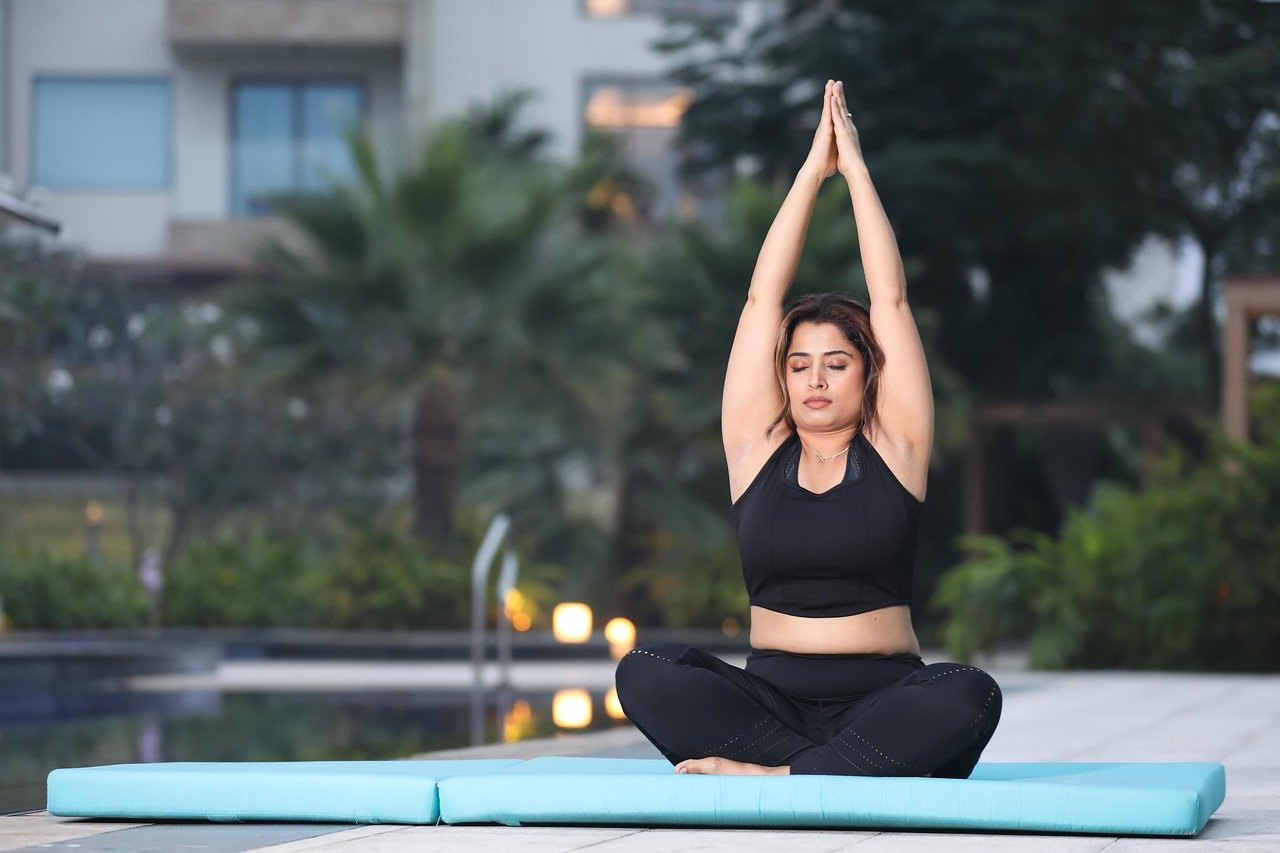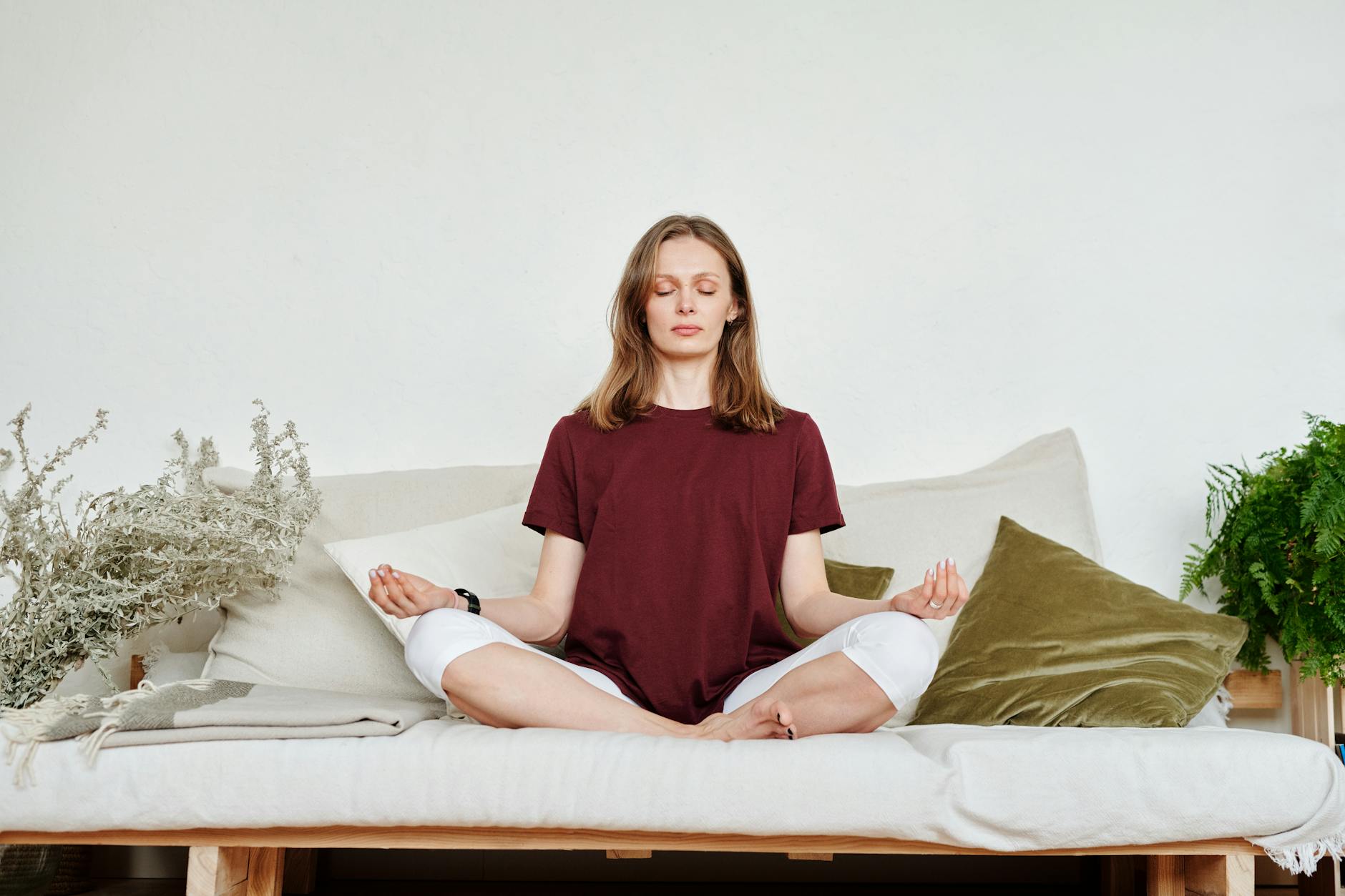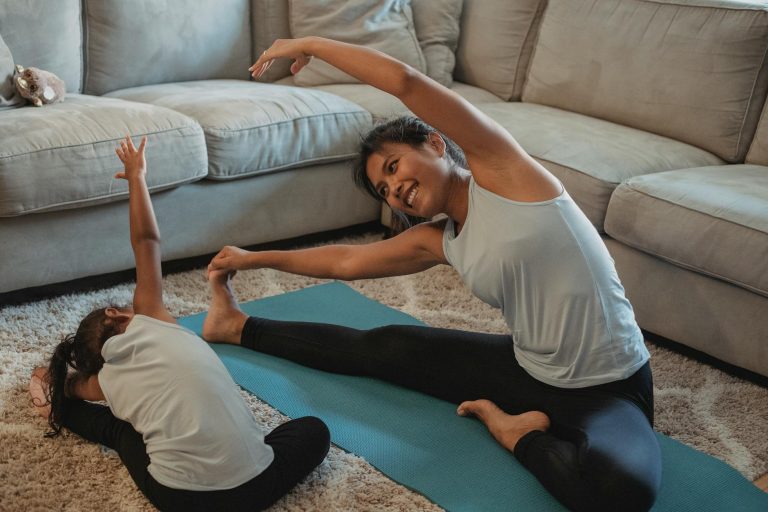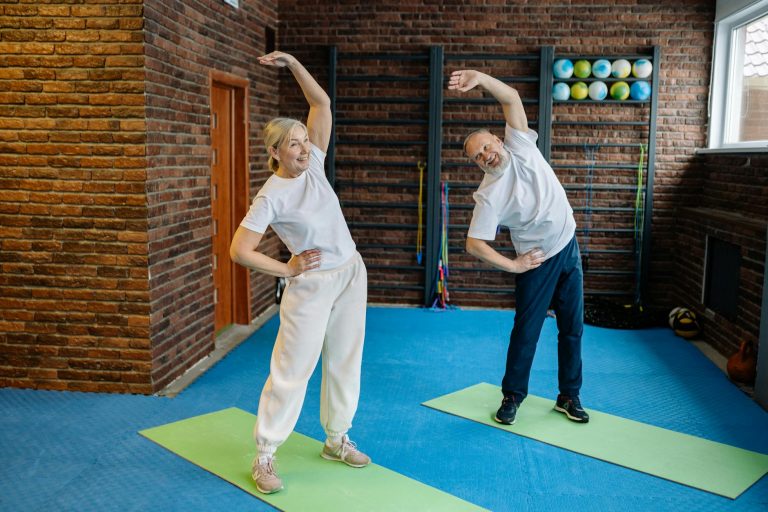5 Minute Breathing Exercises to Calm Anxiety Instantly
Feeling overwhelmed by anxiety? You’re not alone. In today’s fast-paced world, stress and worry can strike at any moment, leaving us feeling breathless and out of control. But what if there was a simple, 5-minute solution that could instantly calm your nerves? 🧘♀️
Enter cyclic sighing, a powerful breathing technique backed by science. Dr. Spiegel, a leading expert from Stanford Medicine, emphasizes the importance of controlling our breath to break the anxiety cycle. This easy-to-learn method has shown remarkable results in reducing anxiety and boosting positive emotions, outperforming even mindfulness meditation in recent studies. The best part? It’s completely free and accessible to everyone.
In this blog post, we’ll dive into the world of quick breathing exercises, with a special focus on cyclic sighing. We’ll explore how these techniques work to calm your mind and body, and provide step-by-step instructions for incorporating them into your daily routine. Get ready to discover a natural, effective way to manage anxiety and improve your overall well-being – all in just 5 minutes a day.
Understanding Anxiety and Its Physical Effects

A. How stress triggers anxiety responses
Stress acts as a catalyst for anxiety responses through the activation of the autonomic nervous system. When faced with a stressful situation, the body’s sympathetic nervous system triggers the fight-or-flight response. This physiological reaction prepares the body to deal with perceived threats, leading to:
- Increased heart rate
- Rapid, shallow breathing
- Heightened alertness
- Release of stress hormones
These immediate reactions can escalate into a cycle of anxiety, where physical symptoms reinforce feelings of distress.
B. Physical symptoms of anxiety
Anxiety manifests through various physical symptoms, often mimicking other health conditions. Common physical manifestations include:
| Symptom | Description |
|---|---|
| Headaches | Tension-type pain, often described as a tight band around the head |
| Nausea | Feeling of queasiness or upset stomach |
| Shortness of breath | Difficulty breathing or feeling like you can’t get enough air |
| Trembling | Shaking or tremors, particularly in hands or legs |
| Sweating | Excessive perspiration, especially in palms or underarms |
These symptoms can be alarming, leading individuals to believe they are experiencing a serious medical condition, which in turn can exacerbate anxiety.
C. The anxiety-breathing cycle
The relationship between anxiety and breathing forms a complex cycle that can perpetuate and intensify symptoms. This cycle typically unfolds as follows:
- Anxiety triggers rapid, shallow breathing (hyperventilation)
- Hyperventilation leads to an imbalance of oxygen and carbon dioxide in the body
- This imbalance causes further physical symptoms like dizziness or chest tightness
- These symptoms increase anxiety, leading to more rapid breathing
Breaking this cycle is crucial for managing anxiety effectively. Techniques that focus on regulating breathing patterns can help disrupt this cycle and activate the parasympathetic nervous system, which promotes relaxation and calmness.
Now that we have covered the fundamental aspects of anxiety and its physical effects, we’ll explore a specific breathing technique in the next section: “Introduction to Cyclic Sighing.” This method offers a practical approach to managing anxiety symptoms and breaking the anxiety-breathing cycle.
Introduction to Cyclic Sighing

Now that we’ve explored the physical effects of anxiety, let’s delve into a powerful technique to combat it: cyclic sighing.
A. Definition and technique
Cyclic sighing, also known as the physiological sigh, is a simple yet effective breathing exercise designed to reduce anxiety and promote relaxation. This technique involves:
- Two sharp inhales through the nose
- A prolonged exhale through the mouth
The process typically lasts for about five minutes and can be performed anywhere, without any special equipment or setting.
B. Benefits for anxiety reduction
Cyclic sighing offers numerous benefits for managing anxiety:
- Activates the parasympathetic nervous system
- Slows heart rate and promotes calmness
- Increases oxygen intake
- Facilitates carbon dioxide offloading
- Enhances focus and mental clarity
- Improves sleep quality
- Boosts emotional resilience
- Enhances cardiovascular health
- Fosters mindfulness
C. Scientific backing from Stanford Medicine study
A groundbreaking study conducted by researchers at Stanford Medicine, including Dr. David Spiegel and Andrew Huberman, provides strong scientific evidence for the effectiveness of cyclic sighing:
| Study Details | Results |
|---|---|
| Participants | 111 healthy volunteers |
| Comparison | Cyclic sighing vs. other breathing techniques and mindfulness meditation |
| Measurement | Anxiety levels and mood changes using standardized questionnaires |
| Key Finding | Cyclic sighing group reported the most significant increase in positive affect over time |
The study revealed that:
- Controlled breathing exercises, particularly cyclic sighing, led to greater improvements in positive emotions compared to mindfulness meditation
- Participants practicing cyclic sighing experienced an average increase of 1.91 points on the Positive and Negative Affect Schedule scale, surpassing the 1.22-point increase noted in the mindfulness group
- The cyclic sighing group demonstrated a lasting decrease in resting breathing rates, linking slower breathing with improved mood
With this scientific backing, cyclic sighing emerges as a promising non-pharmacological approach to mood regulation and anxiety management. Next, we’ll explore how to perform the 5-minute cyclic sighing exercise to harness these benefits for yourself.
Performing the 5-Minute Cyclic Sighing Exercise

Now that we’ve introduced cyclic sighing as an effective technique for anxiety relief, let’s delve into the practical aspects of performing this 5-minute exercise.
A. Finding a comfortable position
To begin the cyclic sighing exercise, it’s crucial to find a comfortable position. This can be:
- Sitting in a chair with your feet flat on the ground
- Lying down on your back
- Standing in a relaxed posture
The key is to choose a position that allows you to breathe freely and maintain focus for the duration of the exercise.
B. Proper breathing technique
The cyclic sighing technique involves a specific three-step breathing pattern:
- Take a deep inhalation through your nose
- Follow with a smaller, additional inhalation through your nose
- Exhale slowly and completely through your mouth
This unique pattern activates the parasympathetic nervous system, promoting relaxation and reducing heart rate. The technique is designed to disrupt the stress cycle and foster a sense of calm.
C. Counting method for rhythm maintenance
To maintain a consistent rhythm during the 5-minute exercise, use the following counting method:
| Breathing Step | Count Duration |
|---|---|
| First inhale | 4 seconds |
| Second inhale | 2 seconds |
| Exhale | 6 seconds |
Repeat this cycle for the full 5 minutes. This structured approach helps in maintaining focus and ensures you’re performing the exercise correctly.
Remember, consistency is key. Dr. Spiegel and his colleagues found that practicing cyclic sighing for just 5 minutes daily over a month led to significant improvements in mood and anxiety levels. The benefits of this technique tend to increase over time, suggesting long-term stress relief potential.
With this simple yet powerful breathing exercise in your toolkit, you’re well-equipped to manage anxiety effectively. Next, we’ll explore other quick breathing exercises that can complement cyclic sighing in your anxiety relief routine.
Other Quick Breathing Exercises for Anxiety Relief

Now that we’ve explored the 5-Minute Cyclic Sighing Exercise, let’s delve into other quick breathing techniques that can provide instant relief from anxiety.
A. NHS-recommended calming breath technique
The NHS recommends a simple yet effective calming breath technique that engages the parasympathetic nervous system, promoting relaxation and helping you stay present. This technique focuses on deep, diaphragmatic breathing, which is characterized by abdominal expansion during inhalation. Here’s how to perform it:
- Sit comfortably with your back straight
- Place one hand on your chest and the other on your abdomen
- Inhale slowly through your nose, feeling your abdomen expand
- Exhale gently through your mouth
- Repeat for 5-10 minutes
This exercise helps counteract the rapid, shallow breathing often associated with anxiety, signaling your brain to calm down and lowering your heart rate and blood pressure.
B. Comparison with mindfulness meditation
While both breathing exercises and mindfulness meditation can alleviate anxiety, they have distinct characteristics:
| Aspect | Breathing Exercises | Mindfulness Meditation |
|---|---|---|
| Focus | Breath control | Present moment awareness |
| Duration | Can be brief (1-5 minutes) | Often longer (10-30 minutes) |
| Technique | Specific patterns (e.g., 4-7-8) | Open monitoring of thoughts |
| Primary benefit | Immediate physical relaxation | Long-term mental clarity |
| Ease of use | Simple to learn and apply | May require more practice |
Both practices can be complementary, with breathing exercises offering quick relief and mindfulness meditation providing sustained benefits for anxiety management.
C. Incorporating exercises into daily routine
To maximize the effectiveness of breathing exercises, it’s crucial to integrate them into your daily life:
- Practice regularly, even when you’re not feeling anxious
- Start with short sessions (1-2 minutes) and gradually increase duration
- Use specific triggers (e.g., before meals or after work) as reminders
- Combine with other relaxation techniques like progressive muscle relaxation
- Experiment with different techniques to find what works best for you
By building these exercises into your routine, you create muscle memory that makes it easier to employ them during moments of high anxiety.
With these quick breathing exercises at your disposal, you’re well-equipped to manage anxiety effectively. Next, we’ll explore how to maximize the benefits of these techniques to ensure long-lasting relief and improved overall well-being.
Maximizing the Benefits of Breathing Exercises

Now that we have explored various quick breathing exercises for anxiety relief, let’s delve into how to maximize their benefits for long-term anxiety management and overall well-being.
A. Consistency and regular practice
Regular practice of breathing exercises is crucial for building muscle memory and enhancing their effectiveness during anxious moments. By incorporating these techniques into your daily routine, even when you’re feeling calm, you can:
- Improve your body’s natural response to stress
- Develop a stronger mind-body connection
- Increase the likelihood of using these techniques automatically when anxiety strikes
To maintain consistency:
- Set aside dedicated time each day for breathwork
- Use reminders or apps to prompt regular practice
- Integrate breathing exercises into existing routines, such as before meals or bedtime
B. Combining with other stress-reduction strategies
While breathing exercises are powerful tools on their own, their benefits can be amplified when combined with other stress-reduction techniques. Consider incorporating:
| Strategy | Benefit |
|---|---|
| Mindfulness | Enhances present-moment awareness |
| Progressive Muscle Relaxation | Releases physical tension |
| Yoga | Improves flexibility and body awareness |
| Healthy diet | Supports overall well-being |
| Regular physical activity | Boosts mood and reduces stress |
By creating a holistic approach to anxiety management, you can address both the physical and mental aspects of stress, leading to more comprehensive relief.
C. Long-term effects on overall breathing patterns and mood
Consistent practice of breathing exercises can lead to significant long-term benefits:
- Improved respiratory function
- Enhanced oxygen efficiency
- Better emotional regulation
- Increased resilience to stress
Over time, these exercises can help retrain your body’s default breathing patterns, shifting from shallow, chest-based breathing to deeper, more beneficial diaphragmatic breathing. This change can have a positive impact on your overall mood and anxiety levels, even when you’re not actively practicing the techniques.
Remember, while breathing exercises are valuable tools for managing anxiety, they should be part of a comprehensive mental health strategy. For persistent or severe anxiety, it’s important to seek professional help, which may include psychotherapy or medication in addition to these practices.

Breathing exercises, particularly cyclic sighing, offer a powerful and accessible tool for managing anxiety and improving overall well-being. As we’ve explored, these simple techniques can activate the parasympathetic nervous system, promoting relaxation and breaking the cycle of stress. The 5-minute cyclic sighing exercise, along with other quick breathing methods, provides immediate relief and long-term benefits when practiced regularly.
By incorporating these breathing exercises into your daily routine, you can take control of your anxiety and enhance your emotional state. Remember, managing stress and anxiety is an ongoing process, and these techniques are just one part of a holistic approach to mental health. Start with just five minutes a day, and you may find yourself breathing easier, feeling calmer, and better equipped to handle life’s challenges. Your journey to a more relaxed and centered self begins with each mindful breath.







